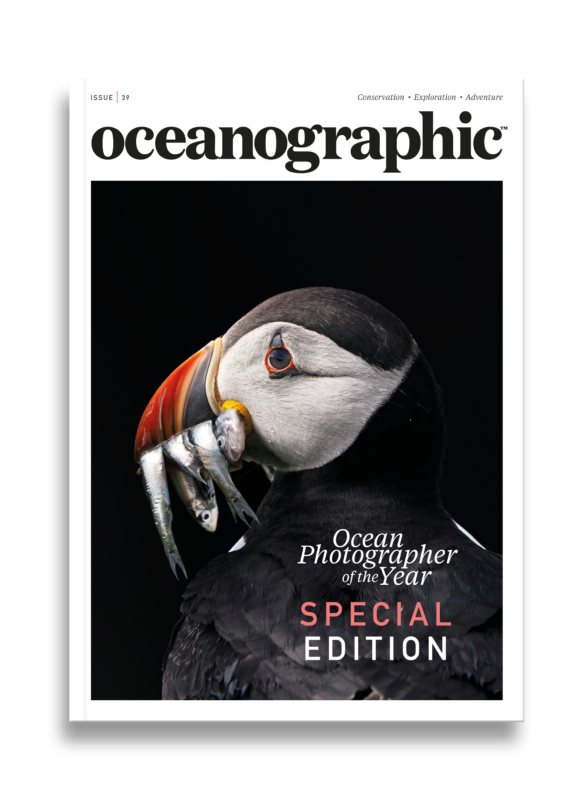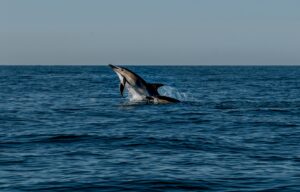Deep-sea mining threatens economy as much as environment
Researchers from the University of British Columbia have found that the risks associated with deep-sea mining “extend well beyond environmental degradation”, with significant risks also posed to marine ecosystems, coastal and indigenous communities, and businesses.
Deep-sea mining not only poses significant environmental, social, and economic risks with far-reaching implications for coastal communities and Small Island Developing States, but it is likely to have a negative impact on the business community, including insurers and investors.
These are the findings of a new critical study into the wider, long-term potential impacts of deep-sea mining, in which it’s highlighted that the industry will likely increase the negative impact on environmental indicators by as much as 13%, notably through increased coastal vulnerability, pollution, and biodiversity loss.
Led by researchers from the University of British Columbia and the Dona Bertarelli Philanthropy, the study concludes that the risks associated with deep-sea mining “extend well beyond environmental degradation”, with significant risks also posed to marine ecosystems, coastal and indigenous communities, and for businesses.”
In particular, it is the insurance sector most at risk.
“The potential liabilities inherent in deep-sea mining activities necessitate a reassessment of current insurance models,” said Dr Rashid Sumalia, professor at the University of British Columbia’s Institute for the Oceans and Fisheries and School of Public Policy and Global Affairs – a senior author on the study.
“Our analysis indicated a surge in risk factors will lead to a large increase in economic risks, with an estimated 11% rise in threats, including contractual violations and koss and profitability risks, which could have major implications for insurers as they directly impact risk assessment models and industry stability.”
Scientists have pointed towards the recent climate change impacts that are already disrupting coastal insurance, including rising sea levels, more frequent hurricanes, and extreme weather events, citing the ‘chilling effect’ that an 11% increase in flood risks would have on the insurance companies already spooked by high-risk areas such as Florida in the US.
“That’s exactly the kind of warning this 11% increase signals for nature,and nature – unfortunately – cannot regulate its premiums,” said Dr Lubna Alam, a research associate at the University of British Columbia’s Institute for the Oceans and Fisheries, and associate fellow at the Institute for Environment and Development of the National University of Malaysia.
Dr Alam has also highlighted the “unexpected impact of oil and gas catastrophes” on the marine environment, including the Exxon Valdez leak in Alaska back in 1989 which resulted in billions of dollars being spent on clean up costs and punitive damages, as well as the Deepwater Horizon well blowout in 2010 in the Gulf of Mexico – considered to be one of the largest environmental disasters in world history with impacts still being felt across the area.
“Again the economic costs paid by BP have been in the billions, and the environmental and health costs continue to affect the area,” said Dr Sumalia. “And these are environmental disasters that occurred in large, developed countries. How would they impact Small Island Developing States, which are much closer to the areas that would see the deep-sea mining activities?”

For those small island states, climate change is driving severe financial and economic consequences which – in turn – have resulted in greater risk scores, driving coverage higher or making it unavailable.
An independent researcher from India, Ms K Pradhoshini, a co-author on the study, said: “Many island nations are already facing reduced participation from private insurers, forcing governments to provide state-backed insurance with limited coverage. In such a scenario, a high-risk score – as observed through our study – can negatively impact a country’s sovereign credit rating, increasing borrowing costs.
“This makes it harder for small island states to secure international funding for infrastructure and climate adaptation projects.”
There are, of course, key economic sectors directly tied to environmental stability, such as fisheries and tourism. If risk scores rise due to climate threats of ecosystem degradation from deep-sea mining, business could suffer losses, leading to employment instability, discouragement of investment, limitations on financial growth, and economic instability.
Consider that current projected plans for deep-sea mining are targeted on the Clarion-Clipperton Zone in the Pacific Ocean – one of the richest tuna fishing areas in the world, and the argument is all the more compelling.
“Rising ocean temperatures are already causing tuna species to migrate eastward, reducing the catch within the exclusive economic zones and Pacific Small Island Developing States, with a potential economic loss of up to $140 million each year by 2050 for these nations,” said Dr Sumalia.
“Deep-sea mining activities can create sediment plumes, introduce noise and light pollution, and discharge water with higher concentrations of metals, potentially disrupting tuna habitats and altering their migration patterns, which would have a devastating effect on the sustainability of tuna fisheries and the economic resilience of these Small Island Developing States.”
Instead, the study advocates for a shift toward circular economy strategies, such as enhanced recycling and urban mining, which offer sustainable alternatives to deep-sea mining. These approaches could reduce the risk exposure that all parties currently face by mitigating the environmental and economic uncertainties linked to deep-sea mining operations.
“Recently, researchers claim to have developed a process to recover nearly all of the lithium from used electric vehicle batteries for recycling,” said Dr Sumalia. “This is an example of other technologies that would help meet the growing demand for essential materials while dramatically reducing environmental and social risks.
“Circular solutions can maximise our resource efficiency, extending the lifecycle of materials and promoting the reuse and recycling of existing stock metals already in circulation. This approach will not only decrease the demand for virgin minerals, but also minimise waste, leading to a substantial reduction in the overall environmental footprint.”
The study, Deep-sea mining and its risks for social-ecological systems: Insights from simulation-based analysis was published in the scientific journal, PLOS ONE.


"*" indicates required fields
Printed editions
Current issue
Back issues

Current Issue
Issue 41 Holdfast to the canopy

Back Issues
Issue 39 Special Edition: OPY2024
Enjoy so much more from Oceanographic Magazine by becoming a subscriber.
A range of subscription options are available.








